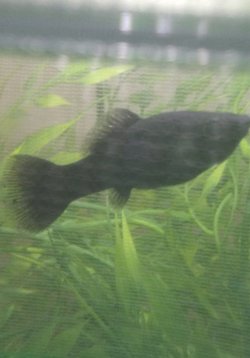New at this
New Member
- Joined
- Aug 26, 2019
- Messages
- 8
- Reaction score
- 0
I am pretty new at this and I noticed Two days ago that my female black molly had black spots on her tail fin. They were not there before. She has had 10 fry up to my knowledge. She seems to attack the other fish and the male i bought with her died shortly after getting both. Any idea on what it is wrong?




